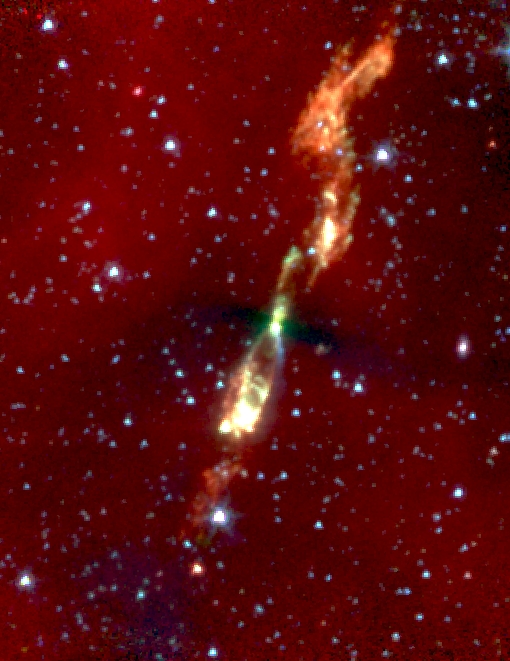My research focuses on the early stages of the star forming process where there
is still a dense envelope of gas and dust infalling onto the forming disk and protostar.
My main research interests are:
- Star and Planet Formation
- Envelopes Around the Youngest Protostars
- Disk Formation and Proto-planetary Disks
- Multiple Star Formation
- Outflows and Jets from protostellar objects
The example below shows the complementary view of protostellar disk formation from submillimeter, millimeter, and mid-infrared wavelengths.

Images of the Disk around L1527 at 870 micron from the SMA (left), CARMA at 3.4 mm (middle),
and Gemini at 3.8 micron (right). The images show that the disk is clearly resolved
in the radial direction at all wavelengths. The following image shows the larger-scale
mid-infrared imaging.
The following example shows the large-scale view of a protostellar envelope in absorption against the mid-infrared background. The diffuse, knotty feautres extending in the vertical direction reflect shock-excited emission in the protostellar outflow, while the flat/dark region in the middle of the image reflects the envelope around the protostar.

IRAC image of the protostar L1157, the dense, flattened envelope
surrounding the protostar is shown by the dark regions
against the red backgroud.